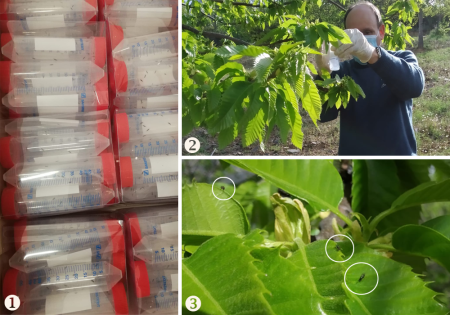
Objective:
The Dryocosmus kuriphilus insect, chestnut gall wasp, introduced in Portugal in 2014, represents a serious threat to the national production of chestnuts. Over the years, various pest outbreaks have been identified, which is currently present in much of the Terra Fria Transmontana region, with levels of severe infestation levels. The official reports state, “We are currently witnessing a large and rapid dispersion of the insect and the alarm of the populations, given the damage it is already causing, so, an intensification of the parasitoid releases for these regions should be considered from 2020”.
Context:
The chestnut gall wasp, by laying eggs on the buds, induces the appearance of galls on the branches and leaves, which appear the following spring, turning green to reddish. The growth of branches and fruiting is affected, decreasing the production of nuts. It is dispersed through adult females or circulation of infested plant material. The existing native parasitoids are insufficient to control wasp populations. The biological control is, therefore, an essential means of combat through the introduction of the parasitoid Torymus sinensis.
Contacts:
Abel Pereira, Paulo Afonso, Isabel Gonçalves, geral@arborea.pt, http://www.arborea.pt/
Ana Tomás, anaraqueltomas@gmail.com, http://www.botaumcibo.pt/ https://www.facebook.com/botaumcibo/
Further information:
ARBOREA (2020) Mapa do resultado de parasitismo fruto das largadas realizadas em 2019 no concelho de Vinhais. https://www.facebook.com/arborea.a.florestal/posts/1908654615933776